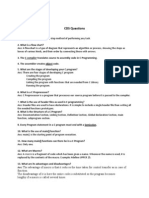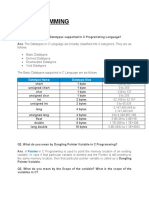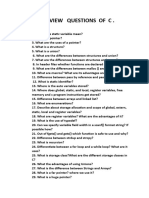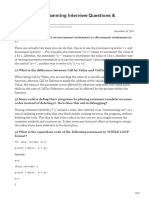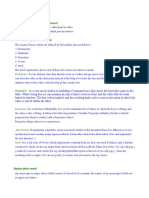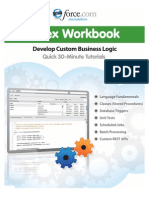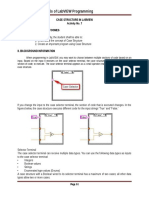0% found this document useful (0 votes)
26 views6 pagesC Language Interview Questions Answers
The document provides a comprehensive overview of the C programming language, covering its history, basic concepts, data types, operators, control structures, functions, memory management, and file handling. It includes definitions, examples, and explanations of key terms and functionalities in C. The content serves as a reference for both beginners and experienced programmers looking to understand or refresh their knowledge of C.
Uploaded by
akshi.confintechnologiesCopyright
© © All Rights Reserved
We take content rights seriously. If you suspect this is your content, claim it here.
Available Formats
Download as TXT, PDF, TXT or read online on Scribd
0% found this document useful (0 votes)
26 views6 pagesC Language Interview Questions Answers
The document provides a comprehensive overview of the C programming language, covering its history, basic concepts, data types, operators, control structures, functions, memory management, and file handling. It includes definitions, examples, and explanations of key terms and functionalities in C. The content serves as a reference for both beginners and experienced programmers looking to understand or refresh their knowledge of C.
Uploaded by
akshi.confintechnologiesCopyright
© © All Rights Reserved
We take content rights seriously. If you suspect this is your content, claim it here.
Available Formats
Download as TXT, PDF, TXT or read online on Scribd
/ 6












